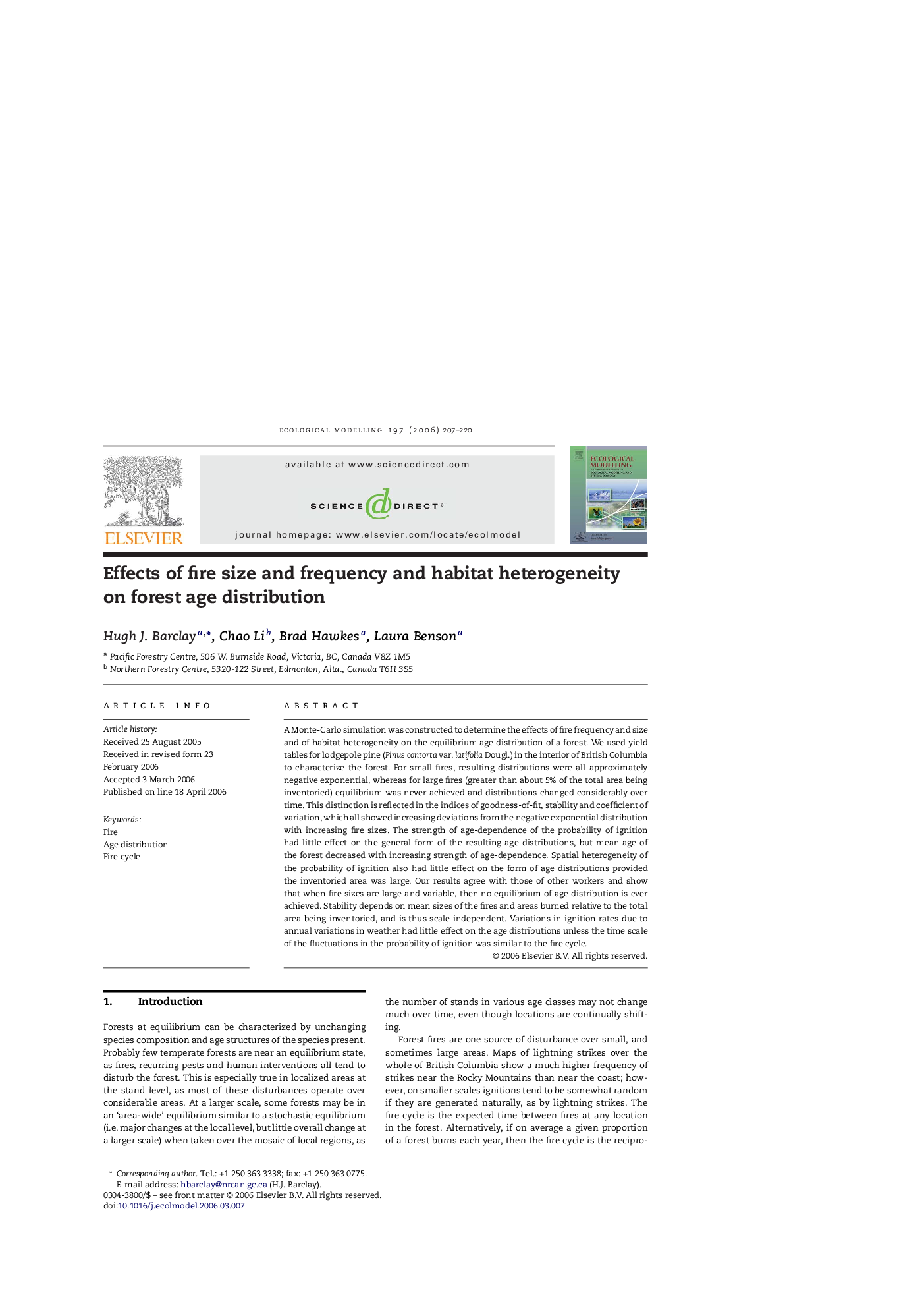| Article ID | Journal | Published Year | Pages | File Type |
|---|---|---|---|---|
| 4378909 | Ecological Modelling | 2006 | 14 Pages |
A Monte-Carlo simulation was constructed to determine the effects of fire frequency and size and of habitat heterogeneity on the equilibrium age distribution of a forest. We used yield tables for lodgepole pine (Pinus contorta var. latifolia Dougl.) in the interior of British Columbia to characterize the forest. For small fires, resulting distributions were all approximately negative exponential, whereas for large fires (greater than about 5% of the total area being inventoried) equilibrium was never achieved and distributions changed considerably over time. This distinction is reflected in the indices of goodness-of-fit, stability and coefficient of variation, which all showed increasing deviations from the negative exponential distribution with increasing fire sizes. The strength of age-dependence of the probability of ignition had little effect on the general form of the resulting age distributions, but mean age of the forest decreased with increasing strength of age-dependence. Spatial heterogeneity of the probability of ignition also had little effect on the form of age distributions provided the inventoried area was large. Our results agree with those of other workers and show that when fire sizes are large and variable, then no equilibrium of age distribution is ever achieved. Stability depends on mean sizes of the fires and areas burned relative to the total area being inventoried, and is thus scale-independent. Variations in ignition rates due to annual variations in weather had little effect on the age distributions unless the time scale of the fluctuations in the probability of ignition was similar to the fire cycle.
